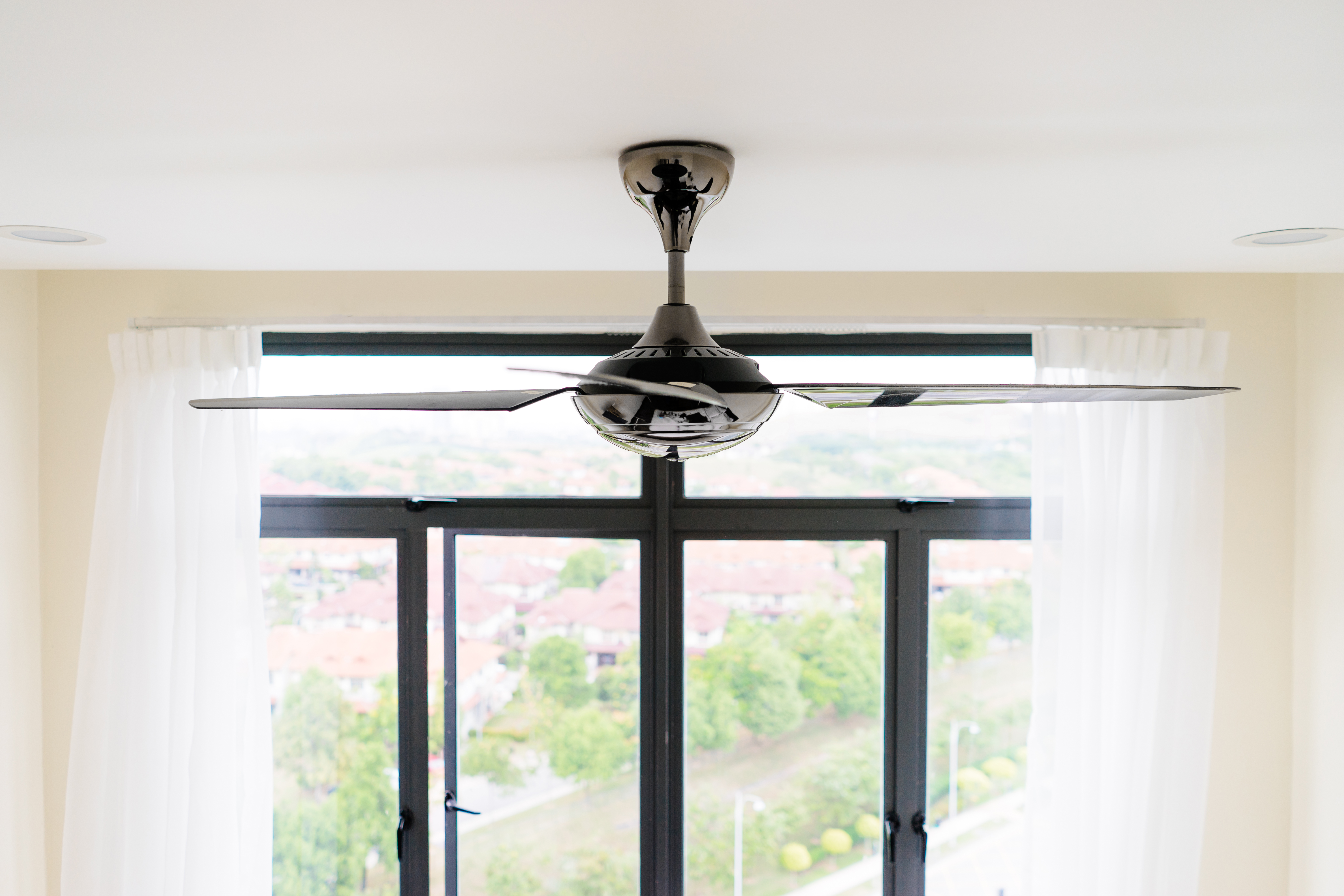
Ceiling fans are gaining in popularity among homeowners who want to cut cooling costs and homeowners who want to reduce their carbon footprint. Ceiling fans have their place in every home, and with so many designs to choose from, you can pick a fan that will look amazing no matter what kind of decor you have.
Disclaimer: this post may contain affiliate links, and every purchase made through these links will give me a small commission (at absolutely no extra cost for you!) AS AN AMAZON ASSOCIATE AND REWARDSTYLE MEMBER, I EARN FROM QUALIFYING PURCHASES. See Privacy Policy for additional info.
But you shouldn’t buy a ceiling fan without doing your research. You need to get the right size fan, and you need to make sure you have the right style of fan for your ceiling height and pitch.
You’ll need to think about what features you need on a ceiling fan, because it gets a little more complicated these days than just pulling a chain. Here’s everything you need to know when you’re picking out a ceiling fan.
You Need to Pay Careful Attention to Ceiling Fan Size
One thing you’ll notice right away when you start shopping for ceiling fans is that they come in different sizes. Fan sizes are measured across the width of the blade sweep, which is the circle created when the blades are spinning. Small fans go up to about 36 inches, then you have medium-sized fans from 36 to 50 inches, and then large ceiling fans are even bigger.
The size fan you need will depend on the size of the room where you’re going to hang it. Measure the square footage of your room by multiplying the length of the room by the width of the room. If you’re hanging a ceiling fan in a small room, under 75 square feet, you should buy a small fan under 36 inches. For rooms 75 to 150 square feet, you need a fan between 36 and 42 inches wide. For rooms 150 to 225 square feet, you need a fan 44 to 50 inches wide. For rooms 225 to 400 square feet, you need a fan 50 to 54 inches wide. For rooms larger than 400 square feet, you should look to buy large ceiling fans 60 inches or larger. It’s often more effective and looks better to hang up a few large ceiling fans in extremely large spaces.
Ceiling Height and Pitch Are Also Factors
How high is your ceiling? You should measure it if you don’t know. You’ll ultimately want your fan to hang at a height no lower than seven feet off the floor, but eight feet high is preferable, especially if you know a lot of tall people or are a tall person yourself. You don’t want to get whacked in the head by a spinning fan blade.

Fans May Have More Features Than You Realize
There are a few fan types: flush mount, downrod mount, and angle mount. Flush mount fans don’t have a downrod and hug the ceiling, so they’re ideal for rooms with low ceilings lower than nine feet. Angle mount fans are good for heavily pitched ceilings – if your ceiling is pitched 34 to 56 degrees, you need an angle mount fan. If your ceiling is exactly nine feet high, you can buy a standard downrod model and you won’t need a downrod extension kit – the 12-inch downrod that comes with most downrod models should be perfect. If your ceiling is higher than nine feet, you should get a downrod extension so you can lower your fan accordingly. Remember that in addition to being eight feet off the floor, a ceiling fan should be 18 inches from the wall and the top of the fan blades should be at least eight inches from the ceiling.
One thing that might surprise you when you go to shop for modern ceiling fans is that they often have far more features than they had in the past. That means you can get better functionality out of a nice fan. You can choose a smart fan that you can control with your phone, or a fan with a remote control.
Wireless wall controls make it easy to install wall controls yourself, without running more wiring. You can get fans with light fixtures for areas without a lot of natural light, and you can even get dimmable light fixtures for when you need more control over the light level of the room – such as in a bedroom.
You Have Plenty of Style Options
When choosing a fan, you’ll definitely want to pick a design you like, but you should also consider how a fan will fit into your home decor. If you choose a fan with a wood finish, choose one that matches the finish of your trim. Make sure the metal hardware on the fan matches the finish on the metal hardware in your house, like your door knobs and light switch covers.
Choosing a ceiling fan sounds like it would be simple, but it isn’t always. There’s a lot you need to know to pull it off, but it’s worth it when you’re enjoying those cool breezes on a hot summer’s day.









Leave a Reply